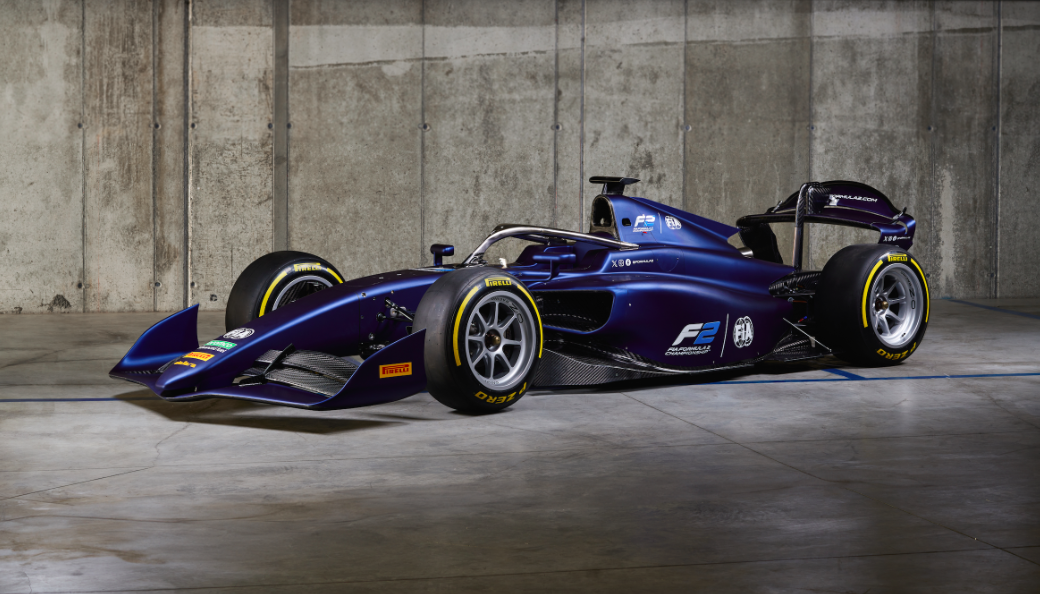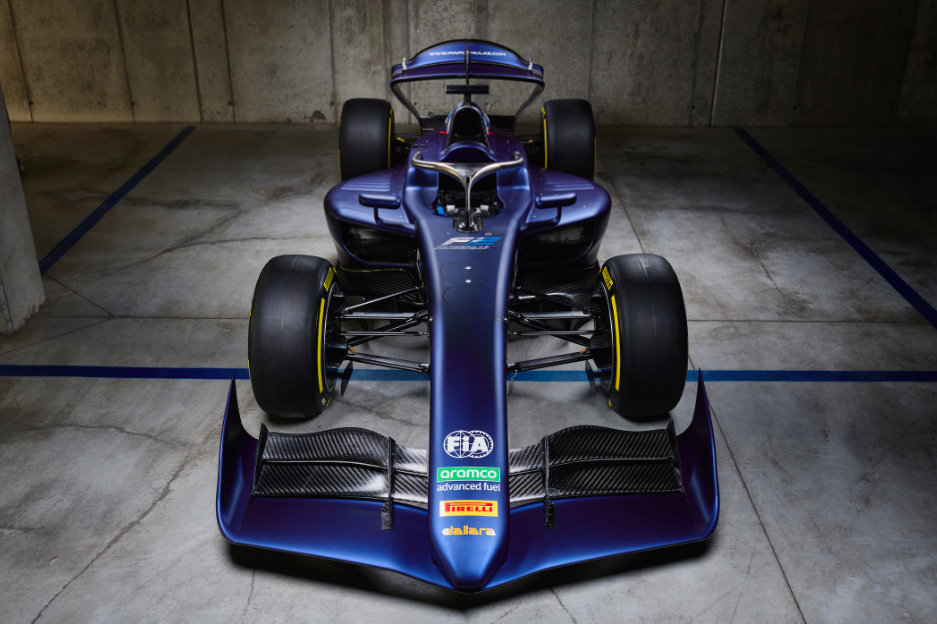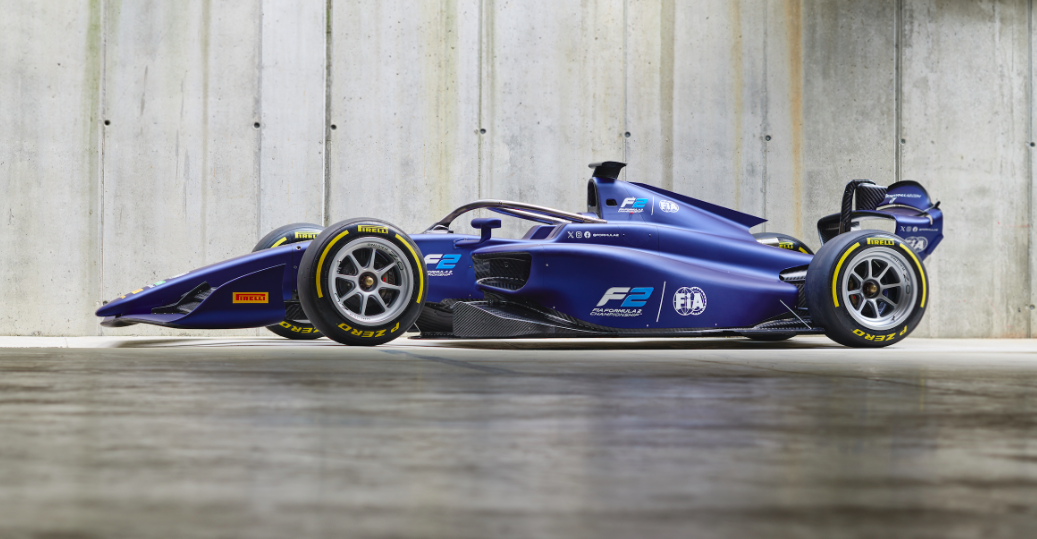

F2 has moved ‘as close as possible’ to an F1 car in unveiling its latest machinery that will run for the next three years.
The new model was unveiled in the F1 paddock in Monza ahead of this weekend’s Italian GP, and the penultimate round of the F2 championship.
The car features a 3.4-litre turbo-charged Mecachrome engine and includes features to accommodate the synthetic sustainable fuel that will be introduced in 2025.
For next year, it will continue to run on 55 percent bio-sourced sustainable fuel, which was introduced this year. Further work will continue to be conducted over the next three years as the sport builds towards running cars on 100 percent of synthetic sustainable fuels in 2027.
The FIA states the car “has also been designed to comply with the 2024 specifications in terms of braking, steering effort and ergonomics to accommodate a wide range of drivers and make the championship as accessible as possible”.

It adds that its “design philosophy…is to give young drivers who aspire to race in Formula 1 the best preparation, by making it as close to an F1 car as possible in terms of safety, look, systems, performance, sustainability, and accessibility, all at reasonable costs.
“Moreover, the nose, front and rear wings, and floor have been designed to encourage wheel-to-wheel racing.”
The car completed a successful shakedown in July in Varano, with former F2 driver Tatiana Calderon at the wheel.
The car on show in Monza, however, is not the finished article as it will continue to be developed over a number of tests across the remainder of the year, with the programme comprising sufficient mileage to ensure reliability before it is delivered to the teams.
The first car will be delivered to the teams before the end of December, with the second car in mid-January. There will be a shakedown with the teams before the first official pre-season test, with one car per team.
Speaking about the car, F2 championship CEO Bruno Michel said: “We’ve designed a powerful, challenging and safe car that will prepare young drivers for F1, and that will continue to provide great racing and a lot of overtaking opportunities, something that the fans expect from F2.

“It has been designed also to fit all types of drivers, taking into account the FIA’s consideration regarding the steering effort. This is obviously key to making our sport more inclusive, by enhancing our car’s driveability and comfort.
“One of our main focuses remains cost control. So, we have kept the same engine and gearbox, and there are a lot of carried-over parts from the previous car.
“Finally, we made sure the teams can manage this new car with 12 operational people, as per the sporting regulations.”
F1 CEO and president Stefano Domenicali added: “F2 consistently delivers excellent racing and acts as an important training ground for future members of the Formula 1 grid, and by bringing the design philosophies of the two cars closer together we will support this development further.
“The new F2 car is also an important symbol for our sustainability journey as the series continues to pioneer advanced sustainable fuel which will become a part of F1 from 2026.”





















Discussion about this post